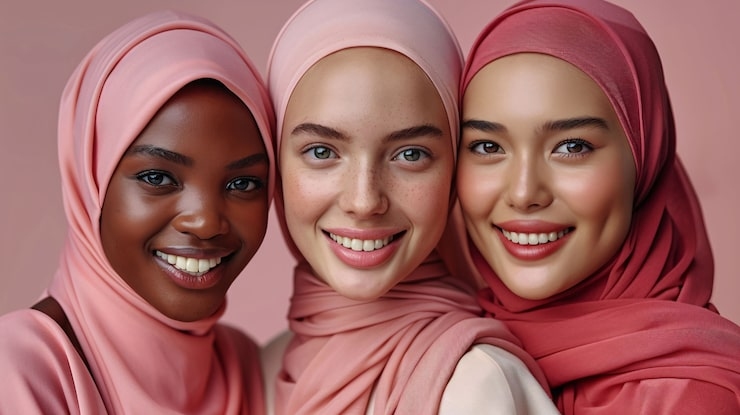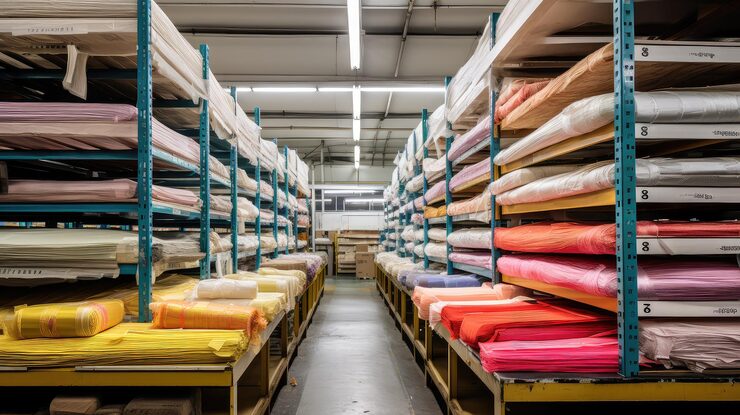What does the headscarf symbolize?
What does the headscarf symbolize? Explore its cultural and social significance
Introduction: The universality and diversity of the headscarf
As a cross-cultural dress, the headscarf has a deep historical background and multiple symbolic meanings. Whether in Islamic culture, Jewish
culture, or traditional Western and Asian societies, the headscarf exists in different forms and carries its own unique cultural, religious and
social meanings. For many people, wearing a headscarf is not only an external decoration, it often represents personal beliefs, cultural identity,
social status, and respect and protection for oneself.
This article will explore the different meanings symbolized by the headscarf and analyze how it affects individuals and society in the context of
globalization.
Religious symbols of the headscarf
1. The headscarf in Islamic culture: modesty and respect
In Islam, the headscarf (Hijab) is not only a choice of clothing for women, but also a spiritual expression. According to the teachings of the
Quran, women should wear headscarves to cover their hair and body to maintain modesty and dignity. This is not only to protect women's
privacy, but also part of complying with sacred teachings. In Islamic culture, wearing a headscarf means that women respect their bodies and
show their inner purity and piety through external covering.
In Muslim society, wearing a headscarf is also a contract between women and social norms, reflecting their commitment to religious obligations.
The headscarf has thus become a symbol of religious identity, symbolizing the firmness and loyalty of faith.
2. Headscarves in Jewish culture: marriage and identity
In Jewish culture, women wearing headscarves have religious meanings similar to those in Islam. Married Jewish women traditionally wear
headscarves (or similar veils), which represent their marital status and convey respect for God. Wearing a headscarf is a manifestation of
women's humility and dignity in marriage, marking their relationship with their husbands and highlighting their responsibilities in the family
and society.
The Talmud mentions that married women should cover their hair because it symbolizes her "beauty" and the exclusivity of marriage. This
headscarf is not only religiously constrained, but also closely related to the social identity of Jewish women.
3. Headscarf in Christianity: modesty and prayer
In the Christian tradition, the wearing of headscarf also has its profound religious significance. The Bible, 1 Corinthians, mentions that women
should cover their hair when praying or performing religious ceremonies. In Christianity, headscarf symbolizes the fear of God and respect for
religious ceremonies. The act of wearing headscarf indicates women's modesty before God. They use headscarf to show their difference from
men and acknowledge God's creation and division of labor between men and women.
4. Headscarf in Hinduism: Family and Social Status
In Hindu culture, wearing headscarf is usually related to women's social status and family identity. Especially in traditional Indian villages,
married women often wear headscarfs, which is not only a loyalty to their husbands and families, but also reflects the role of women in the
family. Headscarfs sometimes also represent the dignity and respect of the family in Indian society, especially in more conservative communities.
Headscarf as a symbol of cultural and social identity
1. Headscarf and cultural identity: a diverse expression
The headscarf is not only a symbol of religion, but also has profound cultural significance. In different parts of the world, headscarves are used
to express personal cultural identity. For many people who wear headscarves, headscarves are an identification with their ethnic culture, and
they show the wearer's respect and inheritance of their own cultural traditions.
For example, in the Middle East, headscarves often represent the characteristics of Arab culture; in Southeast Asia, Tudung (a headscarf worn
by Southeast Asian Muslim women) reflects the traditions of Malay culture. With the deepening of globalization and cultural exchanges, many
women wear headscarves to identify their differences from other cultural groups, while also promoting cross-cultural dialogue and
understanding.
2. Headscarves and social status: a symbol of class and power
In some traditional societies, headscarves are not only a symbol of religion or culture, but also represent the social status of women. Especially
in some conservative societies, women wearing headscarves may be regarded as representatives of the family and society, and headscarves
have therefore become women's "identity labels" in public. In some societies, women wearing headscarves are considered responsible and
self-disciplined, and this symbolic meaning gives headscarves a higher status in the family and society.
3. Headscarf and social change: a manifestation of women's autonomy
With the development of modern society, more and more women have begun to regard wearing headscarf as a way of autonomous choice,
rather than just a social or religious requirement. The headscarf has become a tool for women to express themselves, and many women wear
headscarves to show their adherence to tradition and faith. Especially in some Western countries, women who wear headscarves often face
prejudice and doubt, but they still defend their freedom of belief and cultural respect through their own choices.
For example, in France and other European countries, the practice of Muslim women wearing headscarves has caused a lot of controversy, but
many women insist that wearing headscarves is a declaration of faith and freedom, reflecting their control over personal identity and respect
for cultural identity.
Conclusion: The multiple symbolic meanings of headscarves
As a global cultural symbol, the headscarf carries profound historical and social significance. In different cultural and religious contexts, the
headscarf represents a symbol of modesty, religious beliefs, social identity, cultural identity and women's autonomy. Although the appearance
and wearing methods of headscarves have undergone diverse changes in modern society, it is still a powerful tool for cultural expression.
Whether as a manifestation of religious belief or as a symbol of social status, the symbolic meaning of the headscarf is constantly changing and
developing. For the wearer, the headscarf is not just a garment, but also a way for their inner world to interact with the outside world. Through
the headscarf, women show their cultural belonging and social role, while also constantly promoting society's understanding and respect for
multiculturalism.




